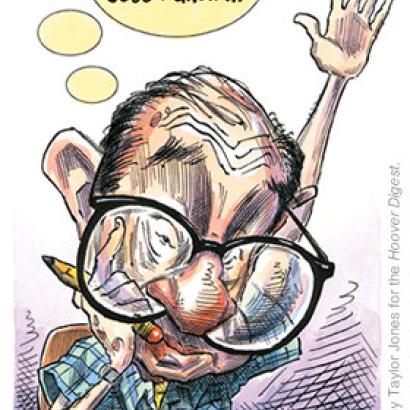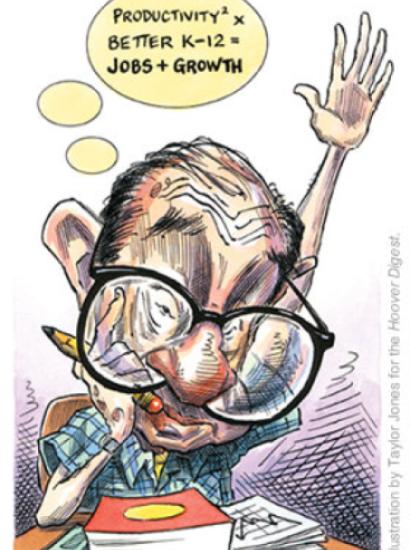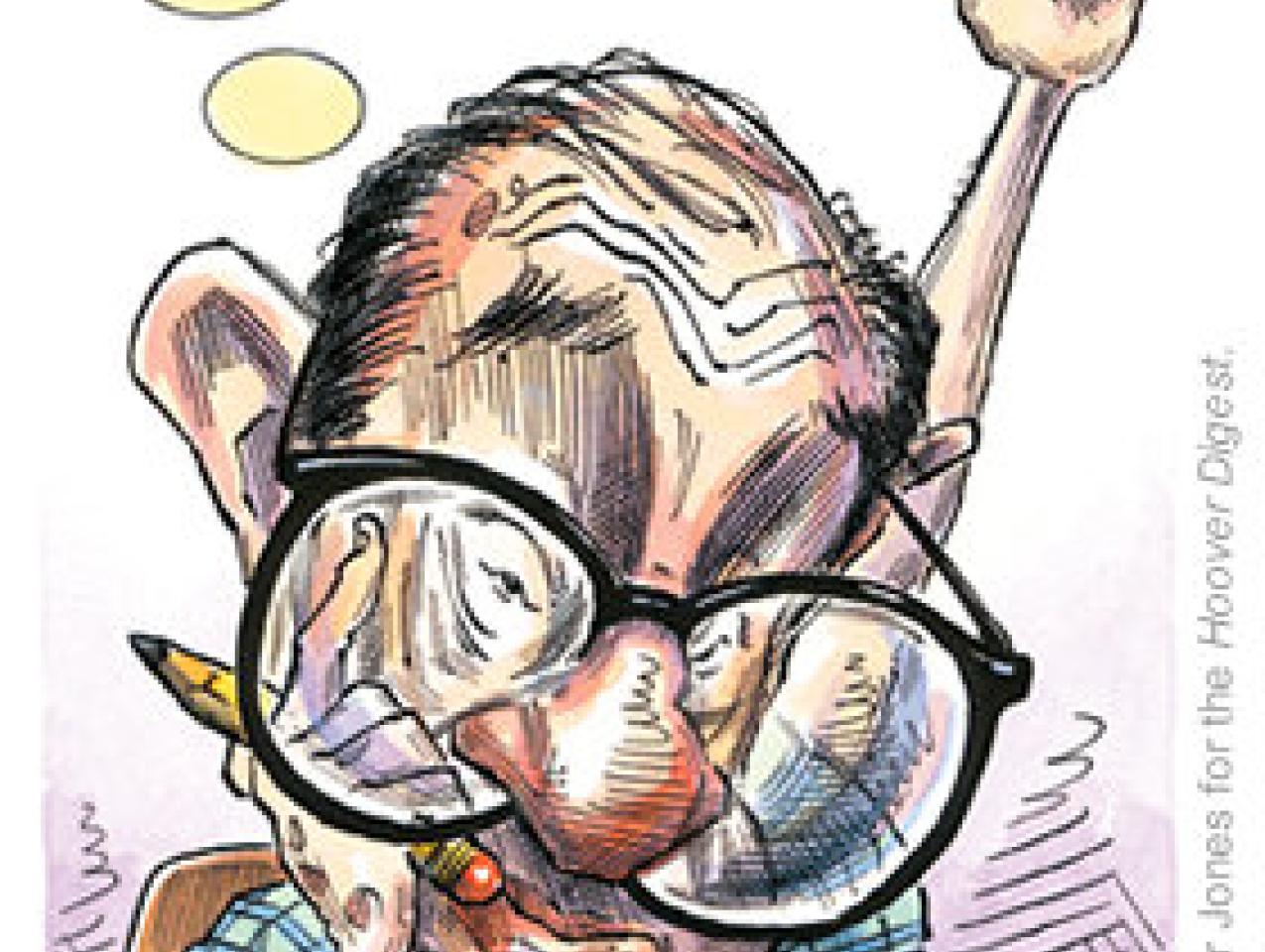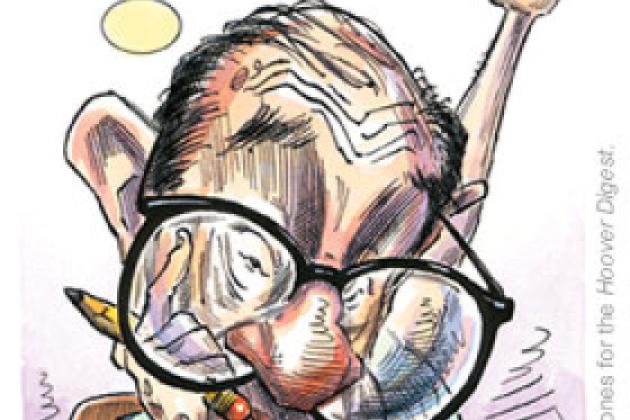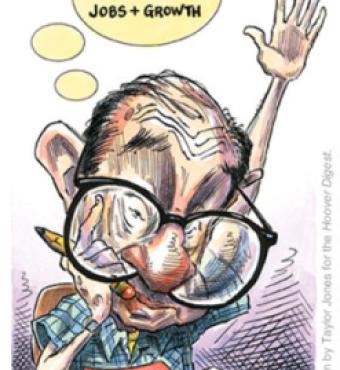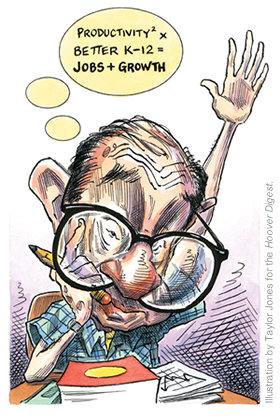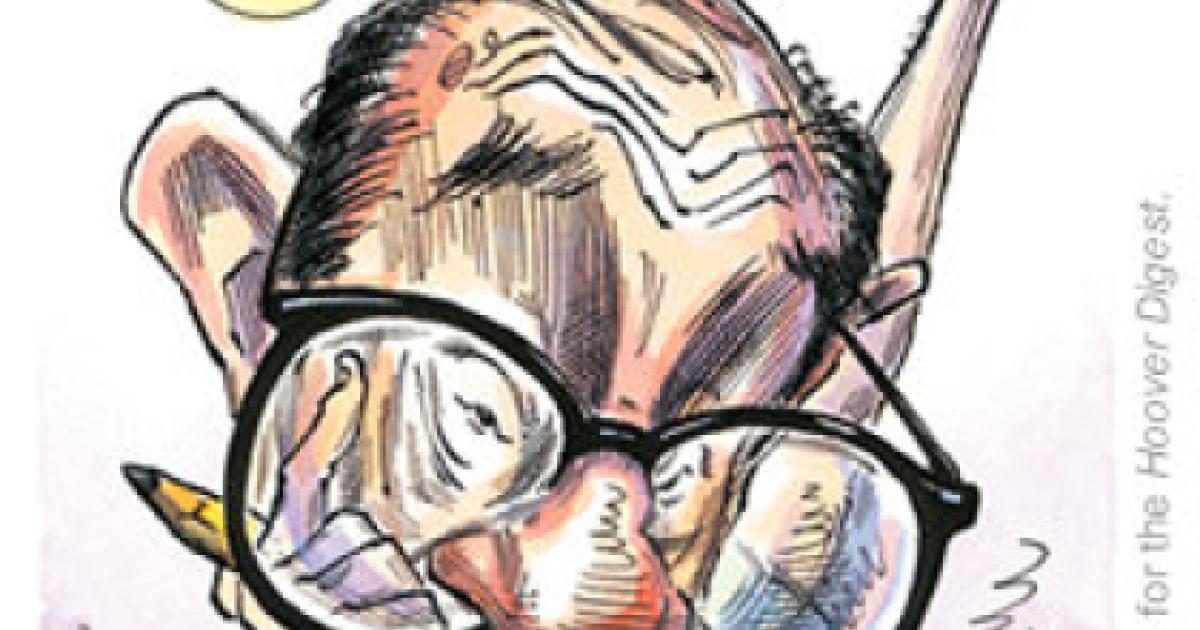- Economics
- US Labor Market
- Education
- K-12
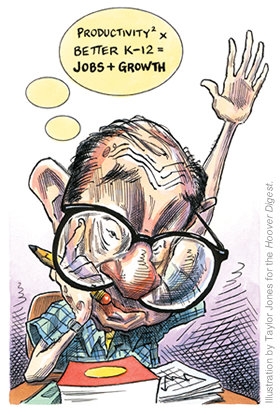
Maybe Alan Greenspan really is the smartest man in America. In a speech to the Omaha chamber of commerce in February, he forged a key link between two of the great tizzies of the past few months—and did so without even mentioning one of them.
The Fed chairman observed that the greatest source of wealth creation in America (after the rule of law) is “the level of knowledge and skill of the population.” He pointed to the mismatch between the rising human-capital needs—the knowledge and skill requirements—of a successful modern economy and the woefully low knowledge/skill level of much of the American workforce. Then he made a powerful case for K–12 education reform.
Yes, he delivered it Greenspan style, which is to say in guarded language. After praising community colleges, he explained that our key problem isn’t too few people with postsecondary degrees. Rather, we must look farther “back through our education system. Many of our students languish at too low a level of skill, and the result is an apparent excess of supply [of low-skill workers] relative to a declining demand. These changing balances are most evident in the failure of real wages at the lower end of our income distribution to rise during the past quarter century. . . . The hypothesis that we should be able to advance the knowledge that our students acquire as they move from kindergarten to twelfth grade, gets some support from international comparisons. . . . In short, our secondary school system needs to serve the requirements of a changing economy in the same way that the expansion of high schools with a broad curriculum served us so well in the first half of the twentieth century.”
What would that do for America? Many good things, such as curbing the practice of outsourcing jobs overseas, one of the two big tizzies of recent months. The “loss of jobs over the past three years,” Greenspan explained, “is attributable largely to . . . outsized gains in productivity that have caused the effective supply [of workers] to outstrip demand. Protectionism will do little to create jobs. . . .We need instead to discover the means to enhance the skills of our workforce.”
Without ever mentioning it, Greenspan endorsed the underlying premise of the No Child Left Behind (NCLB) Act, which was the other big tizzy of the past few months. Fix the K–12 system, he said, so everybody passing through it emerges with a higher level of skills and knowledge than we’re getting today. This will do more to stem job loss, equalize opportunity, boost the earnings of the bottom third of the population, and generally strengthen the economy than any of the alternatives being mooted by Democratic presidential candidates, labor unions, and sundry other kvetchers and grumblers.
I’m not as smart as Greenspan but I had spotted this oddity before he spoke: Many of the people and groups that are shrillest in protesting the loss of American jobs are also the most vocal in resisting the education changes called for by NCLB: labor unions, Senator John Edwards, and more than a few state legislators. Maybe they just don’t get it. When they balk at fixing their schools and raising education standards, they are saying to employers, “Keep sending your jobs overseas, because we have no intention of supplying you with a competent domestic workforce.” Or maybe it’s pure politics: By both decrying job loss and denouncing NCLB, they can slam the Bush administration from two directions.
Regrettably, the White House hasn’t made the link either. When defending NCLB, they never seem to mention its implications for the workforce and the economy. And when addressing the job-loss issue, they never seem to mention education reform. They should read Greenspan more closely. (Could he also be smarter than Karl Rove?)
To be sure, NCLB has some glitches and needs repair work, a bit of which has started as the Education Department has begun widening states’ flexibility with regard to testing recent immigrants and severely disabled children, and in gauging teachers’ subject knowledge. But the tizzy continues. Most of the anti-NCLB grousing comes from the public school system’s notorious aversion to change, its outrageous insistence that nothing can be done differently without more money, and the willingness of elected officials to pander to teachers’ unions and local school boards.








